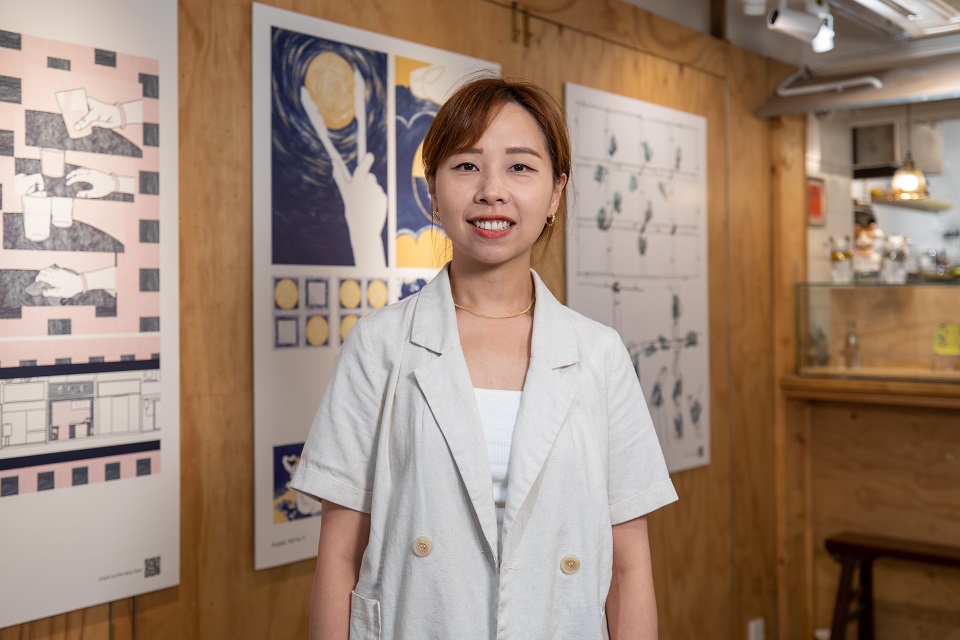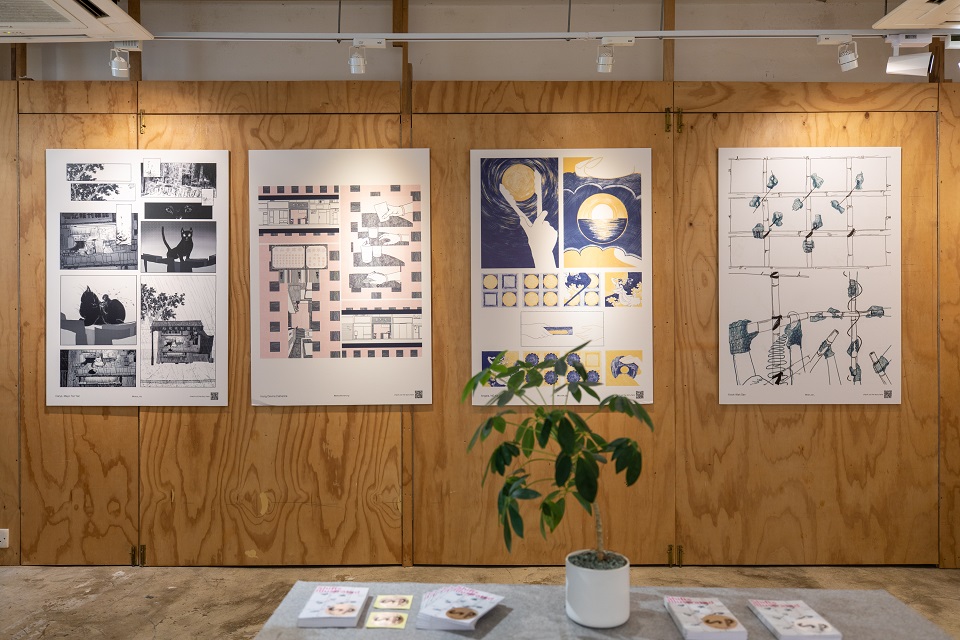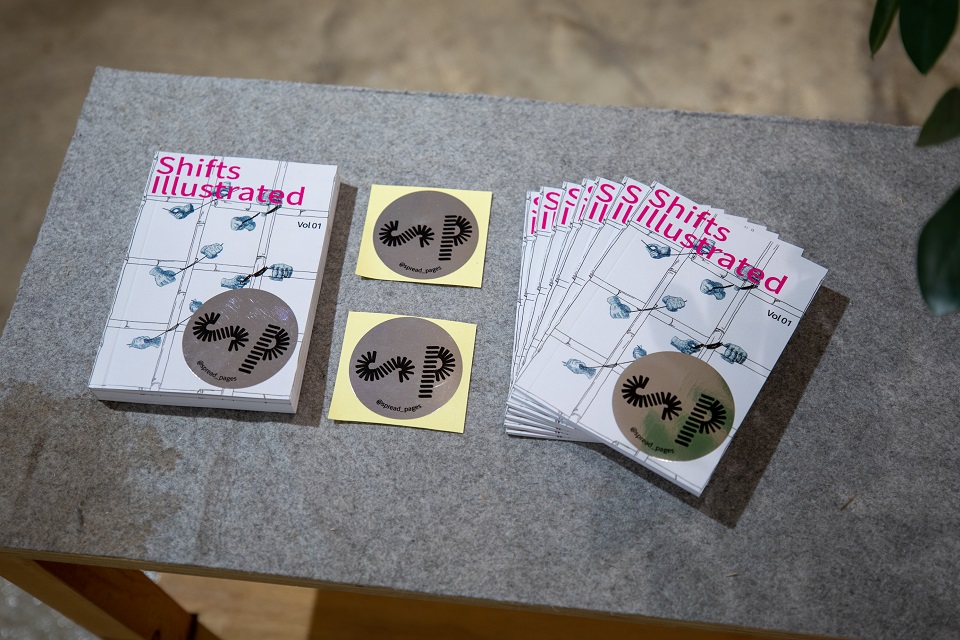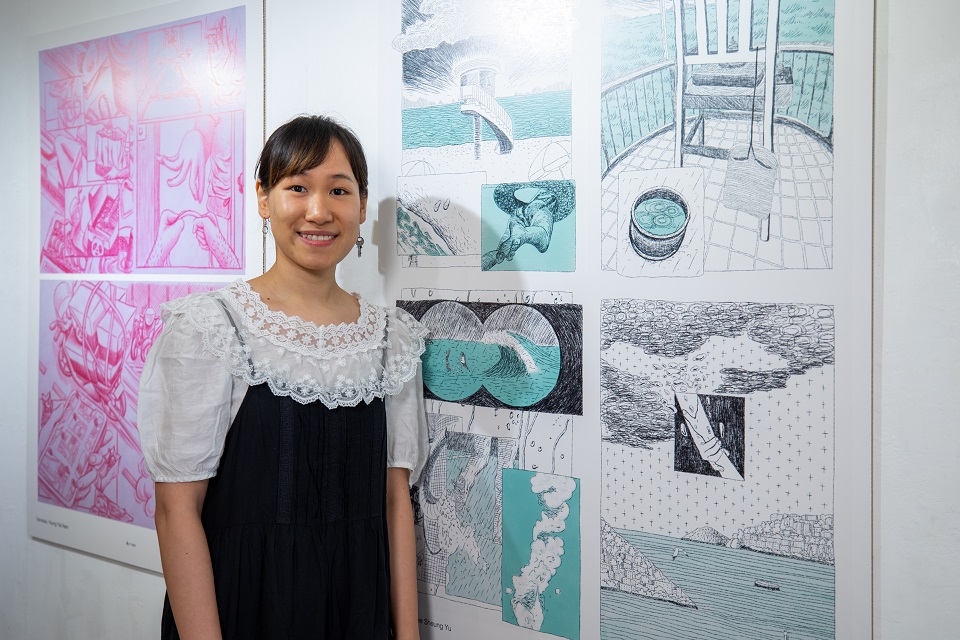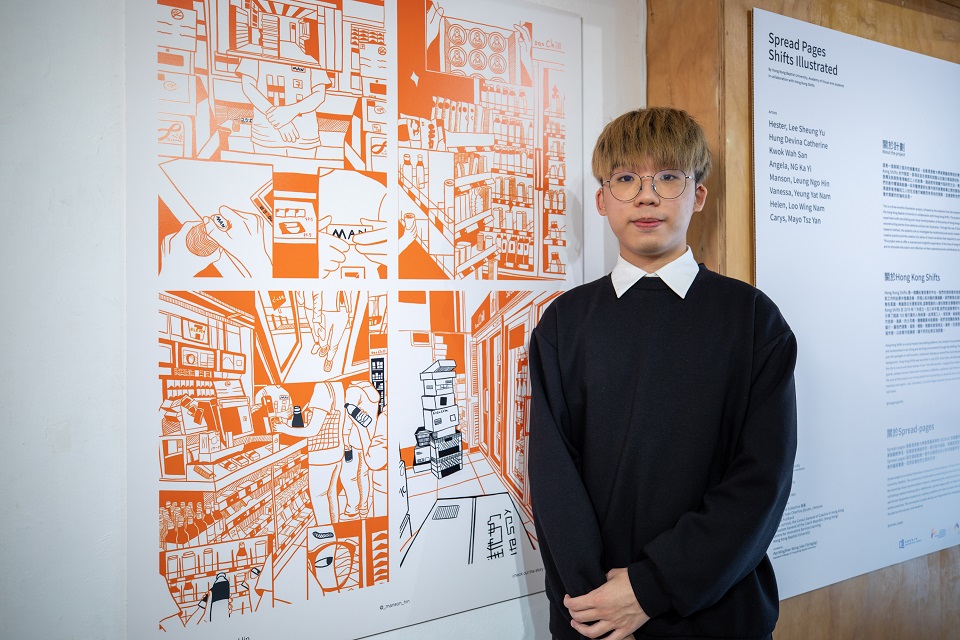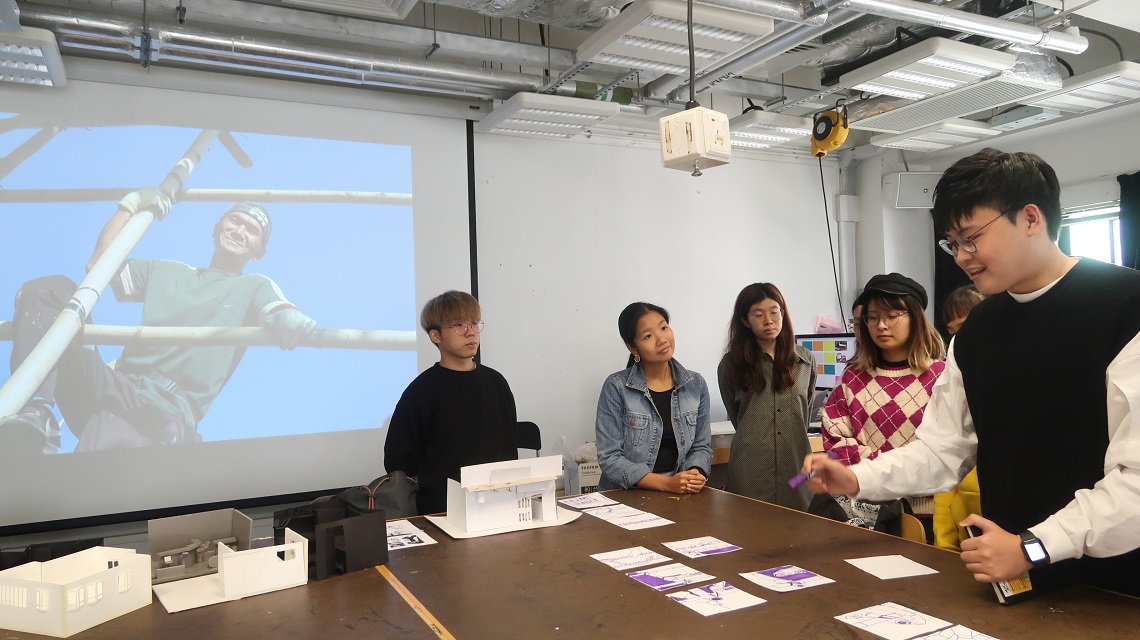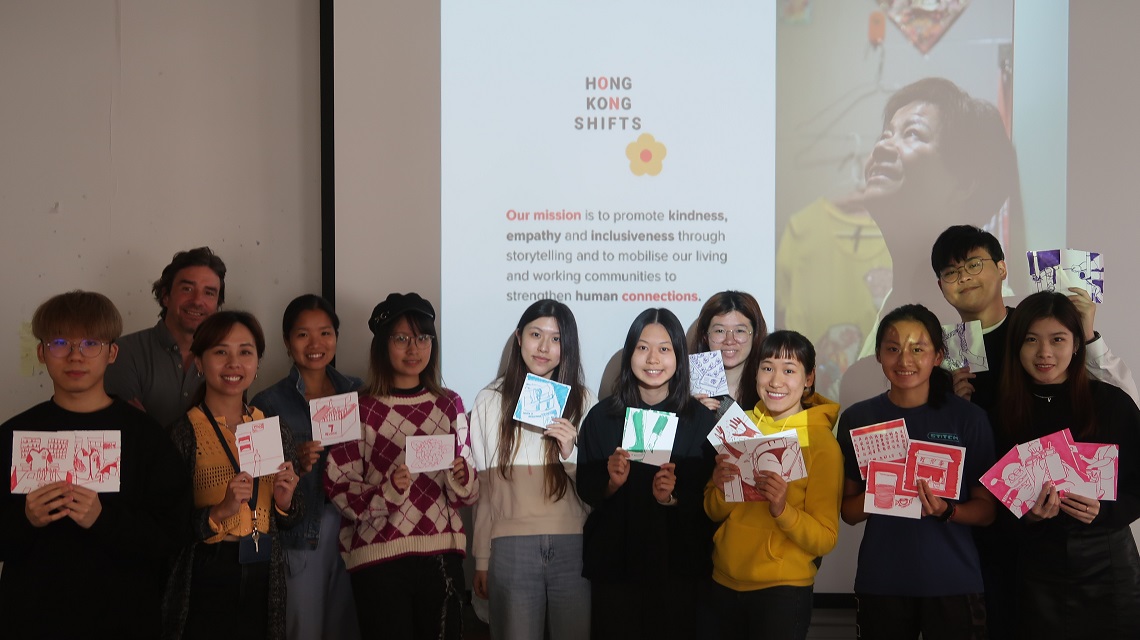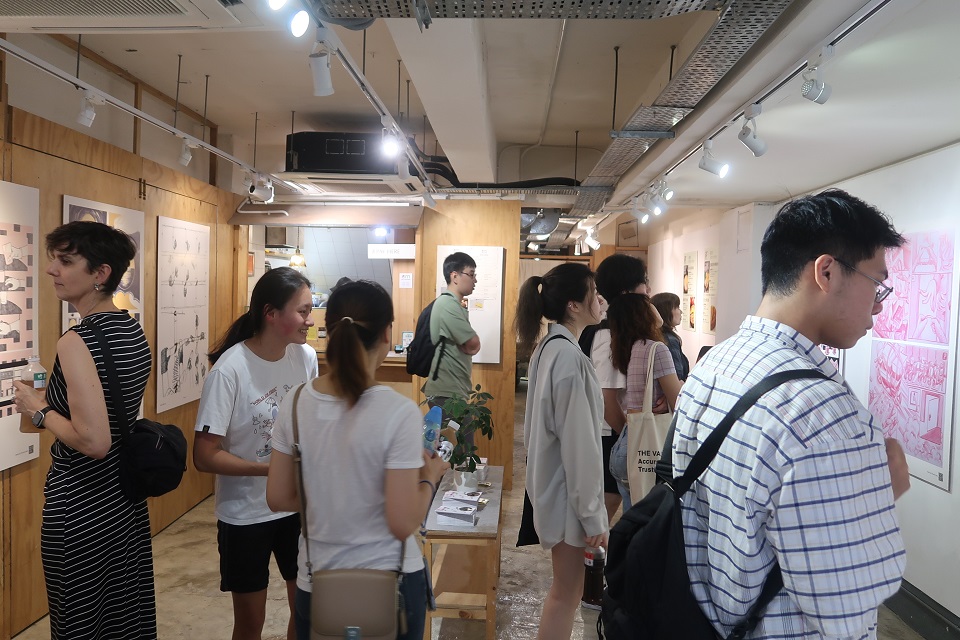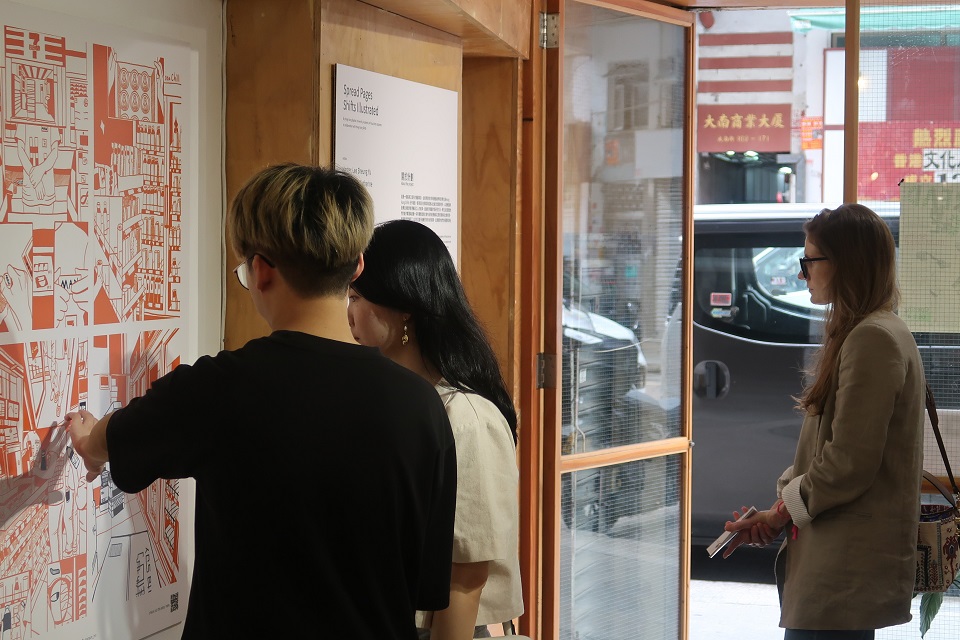Discover HKBU
Illustrating the stories of our community
30 May 2023
They do everything from bringing fresh meals to people’s doors to stacking goods on shelves at a convenience store. They print newspapers starting at around midnight and continue into the early hours of the morning. They monitor weather and ocean conditions, and when necessary, provide water rescue to swimmers in distress. They are shift workers who do essential jobs across different fields to keep our city running.
In a recent exhibition “Shifts Illustrated”, HKBU students of the course Experimental Illustration used their creative talent and illustration skills to tell the stories of these unsung heroes. Presented by the Academy of Visual Arts (AVA), the exhibition was held in collaboration with the social enterprise Hong Kong Shifts, and was supported by the Centre for Innovative Service-Learning at the University.
“Besides teaching illustration knowledge and techniques, the idea of the course is to connect students to the people and places outside of the classroom,” says Ms Pat Wong, Assistant Professor of AVA and a commercially successful illustrator, who led the course and curated the exhibition. “Through collaborating with our community partners, students learn to introduce social context in their creative practice, apply their knowledge of visual communication and develop empathy for others.”
Celebrating shift workers through illustrations
The exhibition caps the students’ learning outcome over the 12-week course, where they were tasked with developing various projects, including editorial illustrations, community portraits as well as a visual narrative project.
For the visual narrative project, each student selected one of the editorial articles about shift workers from Hong Kong Shifts, which is a social impact storytelling platform that has been sourcing and sharing stories of shift workers for the last three years to promote social inclusion and engagement in the city. Over a period of six weeks, the students worked with the Hong Kong Shifts team, conducted research and fieldwork about their subject, re-interpreted their stories, and created a series of comics, each covering four pages and 12 panels.
Done in a two-tone style, the students’ comic artworks capture the everyday life of seven individuals serving our community. Without showing the workers’ facial expressions or having any written commentary, these creative illustrations invite viewers to freely construct their own understanding of the stories.
For Hester Lee, a Year 4 Visual Arts student, she was impressed by the story of an ocean lifeguard and developed her work based on it. “I used to think that it is easy to be a lifeguard, but after reading the article about the details of their job, it changed my perspective completely,” she says. Featuring the sea in pale turquoise, Hester’s realistic portrayal of unpredictable weather conditions at a beach, the dangerous force of waves, and ocean rescues highlights the challenges of a lifeguard.
Manson Leung, a Year 2 Business Administration student who has a passion for art, was drawn to the story of a convenience store cashier. He says: “We are often in a hurry when shopping at convenience stores, and we seldom take notice of the work of the staff. In my comic, I included some scenes of the storekeeper stocking the shelves in order to draw viewers’ attention to her contribution and hard work.” To make sure his illustration is accurate, Manson visited a convenience store in his neighbourhood four days in a week, each time staying around an hour to observe the work of the storekeeper.
Inspired by the experience of taking part in this project, both students are enthusiastic about utilising art to create community impact. Hester aspires to raise awareness of seldom-discussed social issues through visual arts, and Manson is interested in working with different community centres and using his illustration skills to promote community involvement.
Art as a vehicle for communication
Art is often a visual narrative, and art education is more than just teaching artistic skill or practice. It is also a means for students to learn how to tell stories and convey ideas.
Pat has put this notion into practice through the Experimental Illustration course, where she places a strong emphasis on storytelling. She sees illustration as a tool in communication, and to tell the story well, she believes it is important to have empathy when creating art.
“Empathy enables artists to increase their sensitivity towards the outside world, which in turn impacts their creative process. Whether your work is related to the community or not, you are communicating with people through your art,” she says.
To help students develop empathy and build ties in the community, she organised several field trips for students to make sketches at Pang Jai (a fabric market in Sham Shui Po) in January before the market’s closure, where students had the opportunity to interact with the stall owners. In addition, she invited local artists to speak with her class about their practice and experience, helping the students gain a diverse range of knowledge. For the exhibition, she worked with Form Society, a multipurpose creative venue located in Sham Shui Po, enabling the students to share their perspective with visitors and the neighbourhood.
Pat hopes that students enjoy the process of creating the illustrations and find it a meaningful experience. “Through this project, students had the chance to build connections with others and the community. These experiences may inspire them and fuel their passion in their creative practice,” she says.
